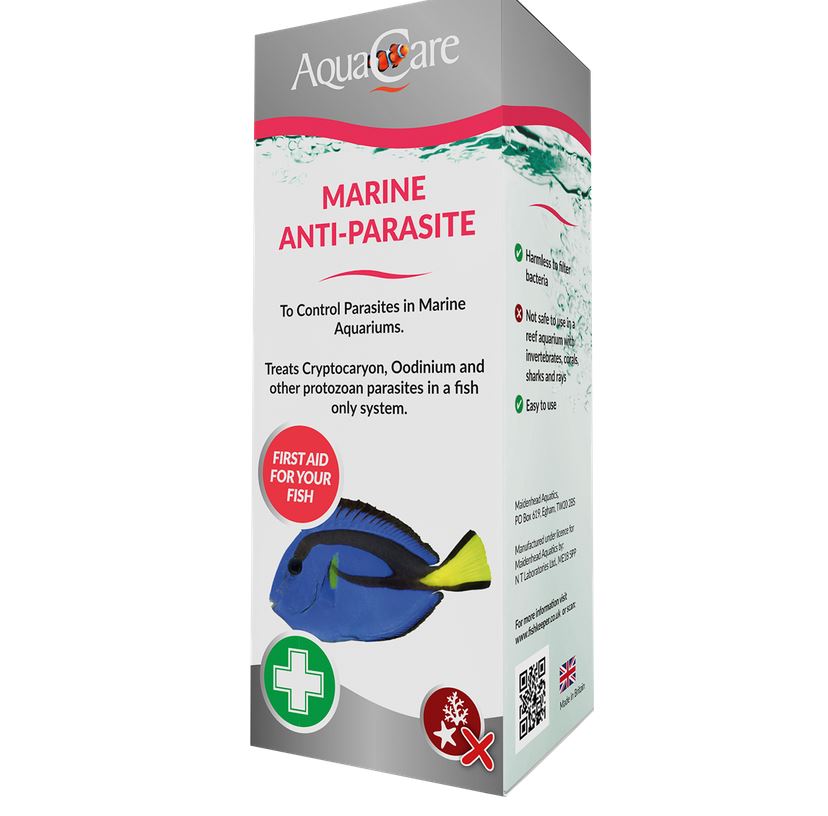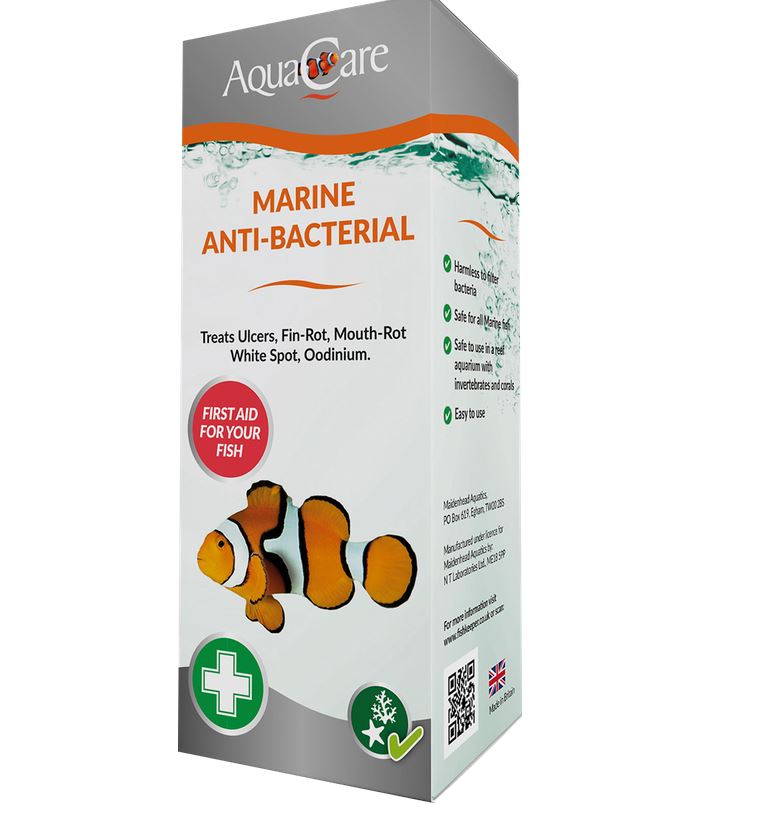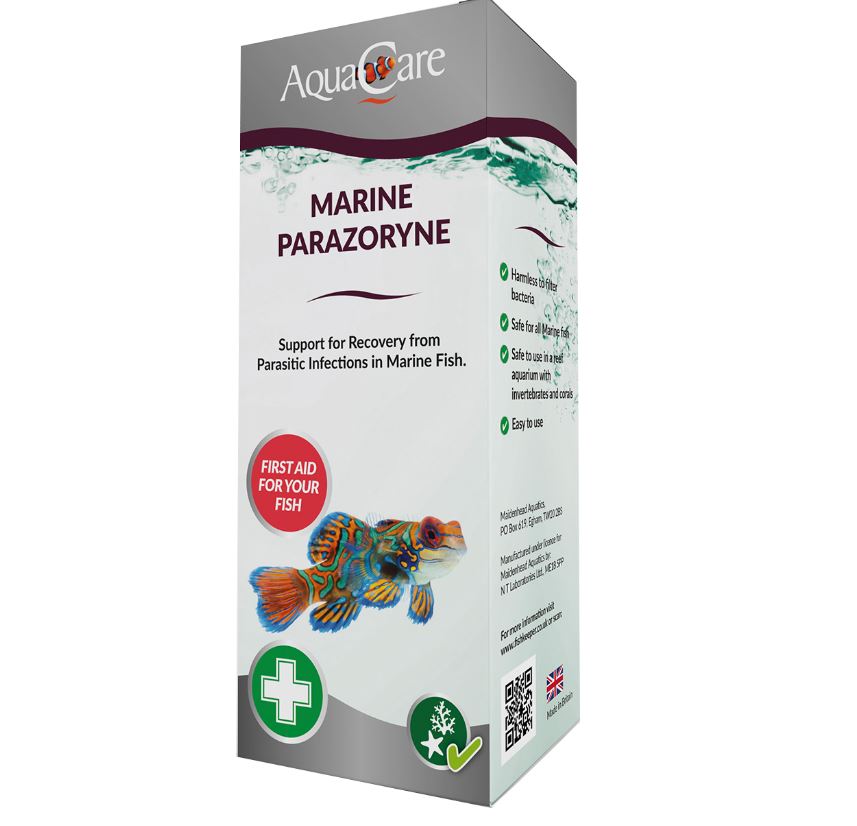Diseases In Fish: White Spot (Marine)
White Spot (Cryptocaryon irritans) is one of the most common diseases in ornamental fish. It has much in common with its freshwater namesake and consequently control measures are similar. In the UK it’s usually shorthanded to ‘spot’ or thanks to the global nature of the internet, the American nickname of ‘ick/ich’ is occasionally used.
The infection occurs when the immune system of the fish is weakened due to stress, such as temperature fluctuations, compatibility issues, or introduction into a new environment. Infected fish exhibit small white granular lesions on the gills and fins which can spread all over the body, giving the appearance of a sprinkling of salt. Initial infection can often be seen on the fins before spreading to the body, particularly the pectorals.
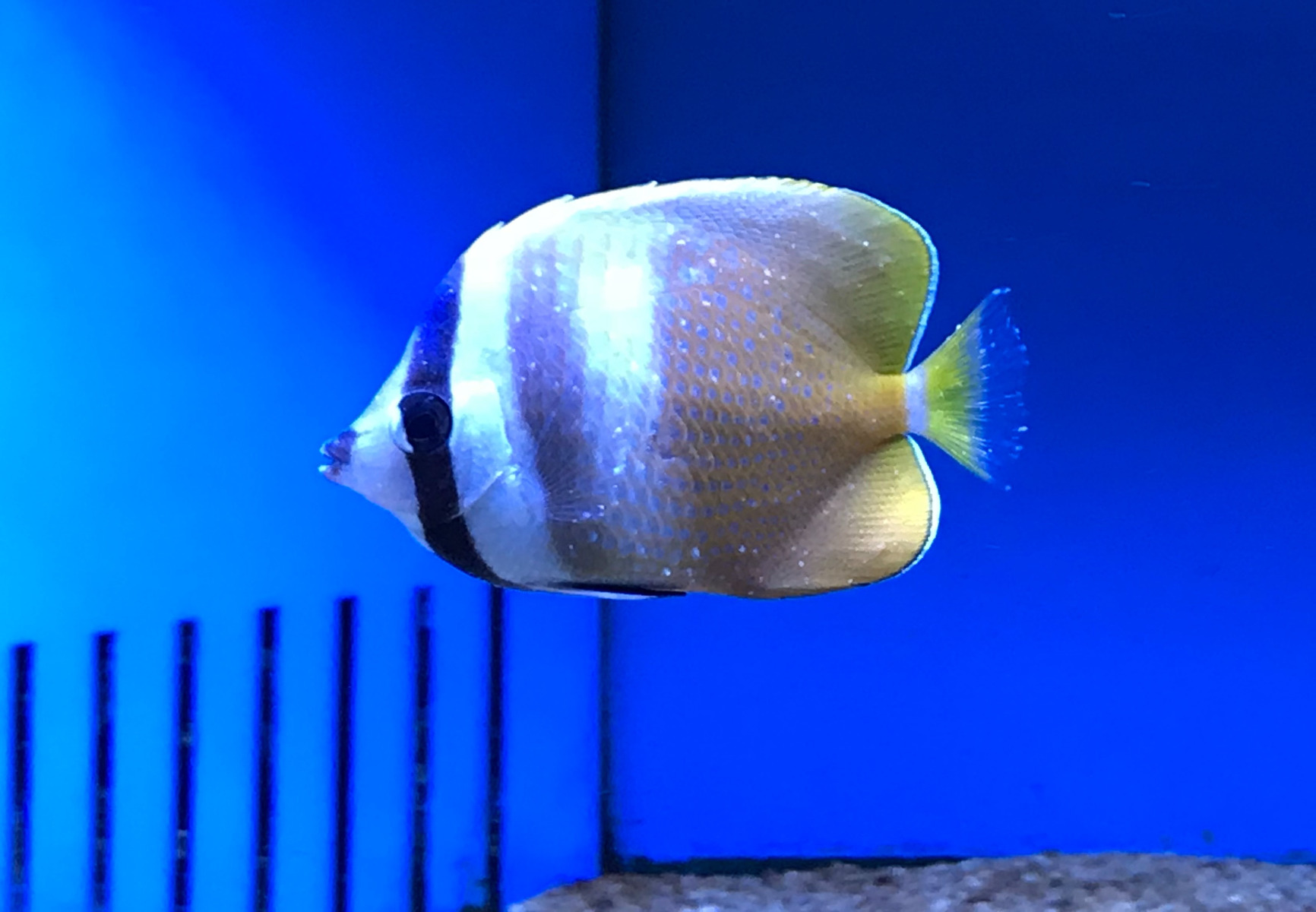
Although infections are often seen in newly added fish, this can be due to the stresses of transport and the challenges of a new home lowering their immune system and exposing them to parasites present in established aquaria. Their settled tankmates are better able to ward off these threats and so remain free of symptoms, this is especially the case where existing fish have got used to any shortcomings in water quality.
Background populations of these parasites can be found in detritus and organic wastes in many systems, so good hygiene and maintenance is important in preventing outbreaks. In stubborn cases, removal and replacement of substrate and decor may be needed.
Treatment of marine fishes is often complicated by the presence of invertebrates, it’s fairly logical that medications are harmful to them as parasites are inverts after all. It then becomes a question of dose rates, with some chemicals such as copper being particularly deadly. Despite years of searching for a solution to the problem of treating protozoan outbreaks in reef aquaria, use of medications still involves compromise and a quarantine tank is a very sensible precaution for anyone looking to stock a set up that mixes fishes and invertebrates. This can be a simple system but must be capable of providing stress-free surroundings for the duration of quarantine, this includes being ready to add fish without exposing them to new tank syndrome - moving a biological filter from the main tank can help here, as can bacterial inoculants such as Microbe Lift Nite Out 2.
Given their tendency towards aggression, a quarantine tank can also earn its keep as a hospital set up for any victims of violence, away from the stresses of reef life.
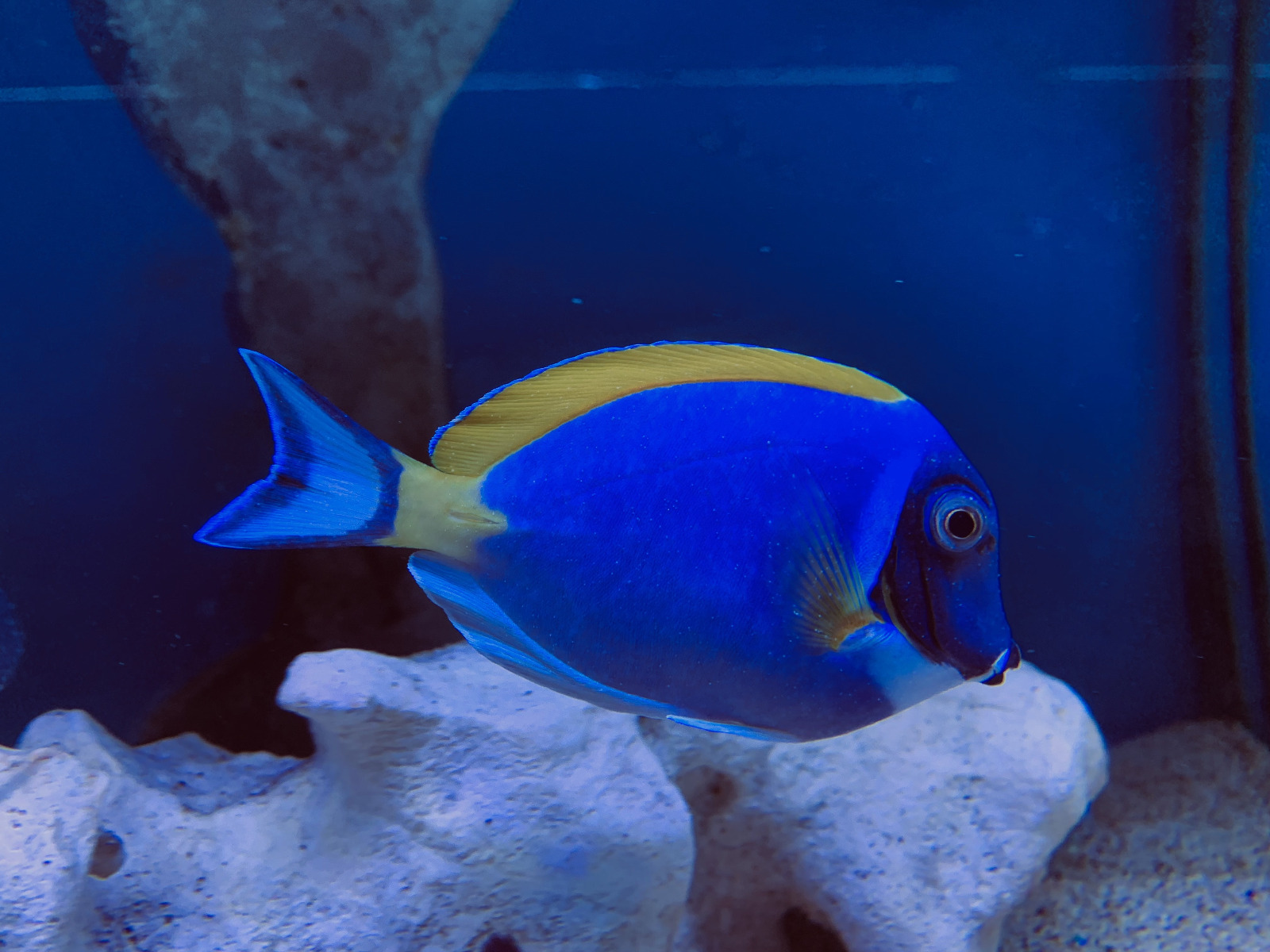
Infected individuals will often clamp their fins and attempt to remove the parasites by rubbing themselves against objects. Fish which have a particularly pronounced infection on the gills will quickly become listless and lose weight rapidly. The disease is caused by a protozoan parasite which feeds within the skin and tissues of the fish covered by the fish’s mucus - largely protecting the parasite from medications.
The only way to stop the infection is to treat the disease over a number of days, as most parasites will have matured and left the protection of the fish’s skin during this period in order to multiply and create juveniles. These juvenile parasites are vulnerable when they try to find new hosts, as they are then free-swimming and can be killed by appropriate treatment, thus interrupting the parasite’s lifecycle and ensuring that no new infections can occur. Free-living stages of this parasite can be particularly persistent and a repeat course of treatment is often needed, especially in furnished aquaria.
Raising the temperature of the aquarium can help speed up this lifecycle and boost the fish’s immune system but this will also affect the availability of oxygen at a time when gill function is compromised.
Adding additional aeration in the form of an air stone can be beneficial, especially for fish which may not appreciate the extra current generated by stronger water movement due to their reduced vigour. This is particularly useful where equipment such as protein skimmers are switched off to avoid interfering with treatment. As some of the chemicals used in medications can lower dissolved oxygen levels, this is good practice as part of a standard treatment plan. Water testing is also vital to determine the source of stress - no amount of medication will cure problems caused by poor water quality.
To help prevent disease outbreaks in systems, especially where invertebrates preclude the use of chemicals, ultraviolet sterilisers can be useful. These irradiate the free-swimming stage of the parasite and dramatically reduce the background populations, helping to break the cycle of reinfection. An ozoniser is another useful piece of equipment that can improve the efficiency of protein skimming and serves to control background parasites in a similar manner.
Be aware that chemical media such as carbon will absorb some or all of the active ingredients of medications and should be removed before use. Copper will be absorbed by calcareous substrates and rockwork, making decor exposed to treatments permanently unsuitable for use in reef aquaria.
When using more potent copper products, it’s wise to use a copper test kit and monitor levels closely - high levels can be toxic to fish both directly and by destroying gut flora in species such as tangs. Aquacare products are formulated to be safe with these species when dosed correctly.
Marine Anti-Parasite
Treats Cryptocaryon, Oodinium and other protozoan parasites in a fish only system.
CAUTION: This product contains copper and cannot be used in a reef aquarium or where sharks, rays, shrimps, crabs and other invertebrates are present.
Parasites such as White Spot (Cryptocaryon) and Velvet (Oodinium) can be devastating to fish in a marine aquarium. Containing copper which is lethal to many marine fish parasites, the Anti-Parasite treatment controls and eliminates these parasites in marine aquariums.
Diagnosis Guide: Small white spots like grains of salt appear scattered on the fish's body. The fish may show signs of irritation and rub on objects in the aquarium, or a grey film may be visible all
over their body.
Directions:
1) If you require help to calculate the volume of water to be treated please ask for guidance at your nearest Maidenhead Aquatics store. Note that aquarium decor such as rock work and sand will impact on your tank’s capacity by displacing water - failing to take this into account can lead to overdosing. This product is not suitable for use with invertebrates.
2) Switch off UV filters and ozone generators during treatment and remove filter materials such as activated carbon.
3) Shake the bottle thoroughly before use.
4) Dose Rate: As a Preventative - Add 1 ml per 40 litres when introducing new fish. Can be used as an overnight quarantine bath.
As a 12 day course of treatment:
Day 1 - 1 ml per 40 litres
Day 2 - 1 ml per 20 Iitres
Day 3 - 1 ml per 40 litres
Day 4 - 1 ml per 20 litres
Day 5 - 1 ml per 40 litres
Day 7 - 1 ml per 40 litres
Day 9 - 1 ml per 40 litres
Day 11 - 1 ml per 40 litres
100ml pack treats a 400 litre aquarium for 12 days.
5) Mix the required dose of treatment with 1 litre of aquarium water.
6) Add this diluted mix slowly to the aquarium where water movement will ensure good circulation and rapid distribution.
For sensitive species, doses can be administered gradually over several hours to ensure the safest dilution rate. Deliberate under-dosing is not recommended, as this can encourage resistance in target pathogens.
Marine Anti-Bacterial - for treating whitespot in tanks containing invertebrates
Marine Anti-Bacterial can be used to treat marine white spot (Cryptocaryon) in a reef aquarium, simply the day after the single dose of Marine Anti-Bacterial follow up with a full 10 day course of Marine Parazoryne.
Directions:
1) If you require help to calculate the volume of water to be treated please ask for guidance at your nearest Maidenhead Aquatics store. Note that aquarium decor such as rock work and sand will impact on your tank’s capacity by displacing water - failing to take this into account can lead to overdosing.
2) Shake the bottle well.
3) Turn off UV and remove any adsorbent filtration media such as carbon during the 10 day treatment period.
4) Maintain good aeration and turn off protein skimmers for 2 hours after addition of product. Adding an air stone will help to ensure oxygen levels remain high and is highly recommended.
5) Dose rate: 10ml per 44 litres. 100ml pack treats 440 litres.
6) Mix the required dose of treatment with 1 litre of aquarium water.
7) Add this diluted mix slowly to the aquarium where water movement will ensure good circulation and rapid distribution.
8) Leave 10 days before repeating treatment. The dosage can be doubled in the fish-only marine aquarium without affecting the filter bacteria.
9) To treat white spot apply a single dose of Marine Anti-Bacterial followed the next day by a full 10 day course of Parazoryne.
100ml pack treats 440 litres.
Marine Parazoryne - Support for Recovery from Parasitic Infections in Marine Fish
Parazoryne works as a herbal support for recovery from parasitic infections, such as, Marine Velvet (Oodinium) and Marine White Spot (Cryptocaryon) and is best used at the same time to complement the action of other treatments such as Marine Anti-Bacterial. Added daily for 10 days, it will support the fish after the active medication and help to ensure that the treatment is as effective as possible.
Directions:
1) If you require help to calculate the volume of water to be treated please ask for guidance at your nearest Maidenhead Aquatics store. Note that aquarium decor such as rock work and sand will impact on your tank’s capacity by displacing water - failing to take this into account can lead to overdosing.
2) Shake the bottle well.
3) Turn off UV and remove any adsorbent filtration media such as carbon during the 10 day treatment period.
4) Maintain good aeration and turn off protein skimmers for 2 hours after addition of product. Adding an air stone will help to ensure oxygen levels remain high and is highly recommended.
5) Dose rate: Add 1 ml per 40 litres every day for 10 days. - This pack treats 400 litres for 10 days.
6) Mix the required dose of treatment with 1 litre of aquarium water.
7) Add this diluted mix slowly to the aquarium where water movement will ensure good circulation and rapid distribution.
8) Can be re-applied at any time.
100ml pack treats 400 litres.
